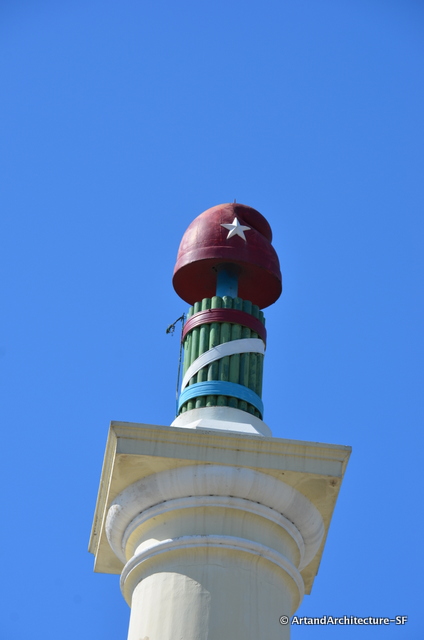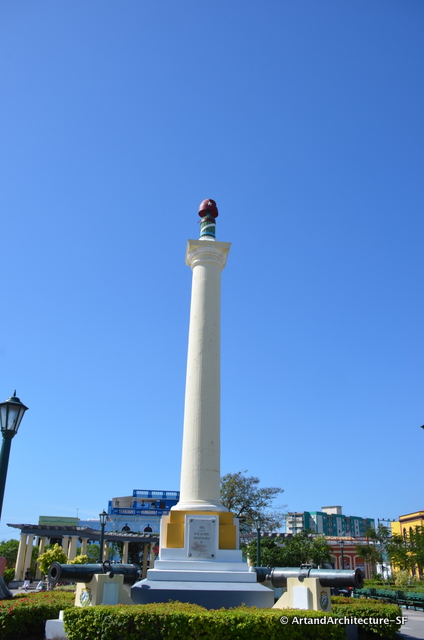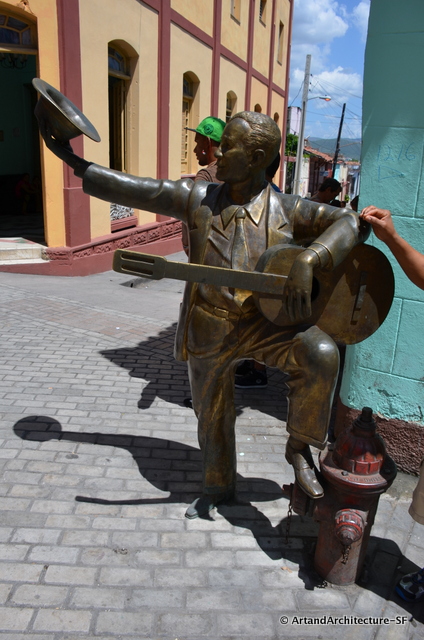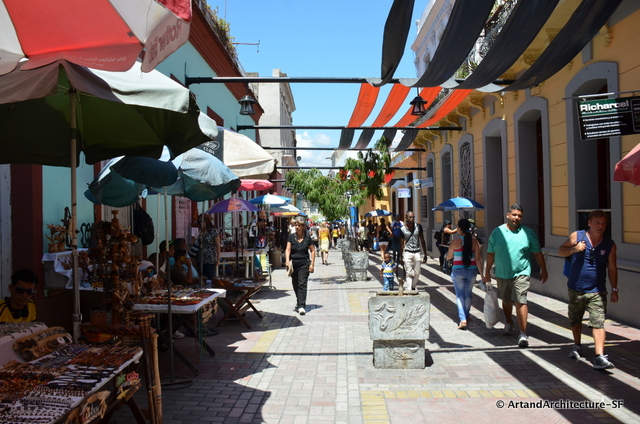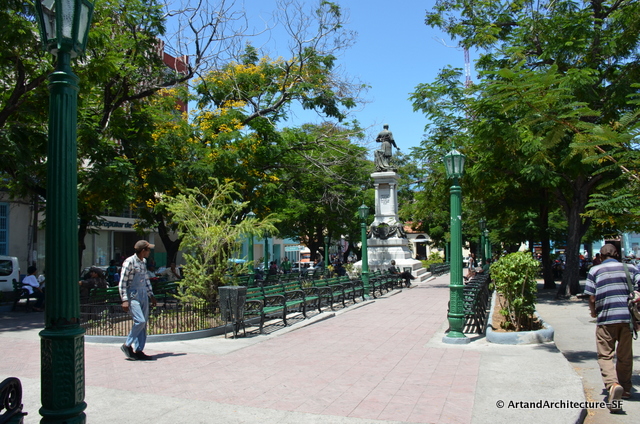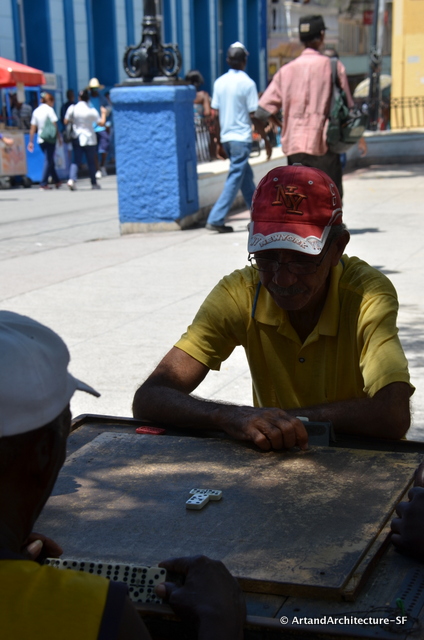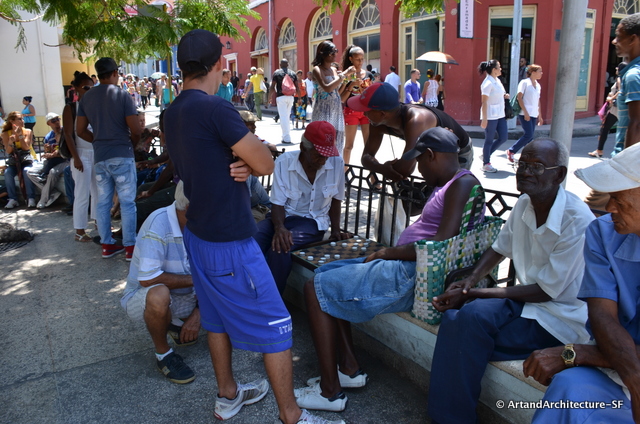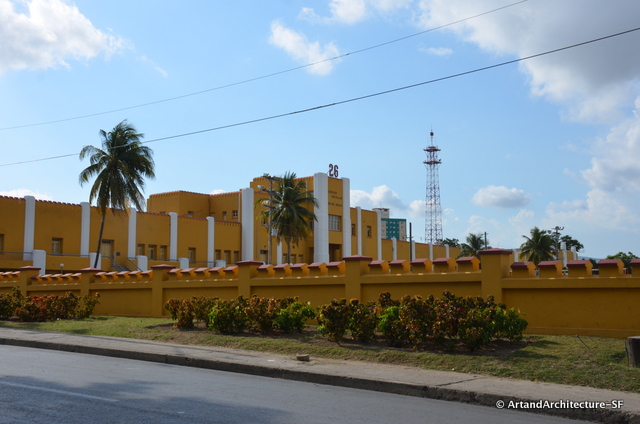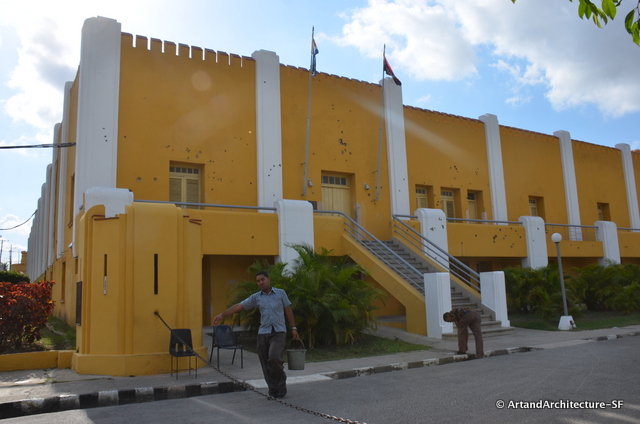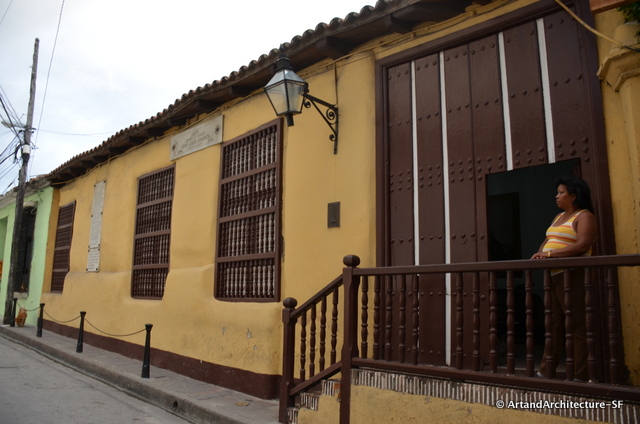This is a Phrygian cap. It is a soft conical cap with the top pulled forward and in the past was associated with the people of the Phrygia region of Anatolia. In early modern Europe it came to signify freedom and the pursuit of liberty through a confusion with the pileus, the felt cap of manumitted (emancipated) slaves of ancient Rome. Therefore, the Phrygian cap is sometimes called a liberty cap.
The cap sits atop the Cuban coat-of-arms and here it sits atop a column in Plaza Marte.
Plaza Marte was constructed in 1799 and is one of Santiago’s central plazas in the “old” part of town. Named Liberty Square on June 12, 1899, to honor the independence of Cuba, everyone still calls it Plaza Marte. Marte is Spanish for Mars, the plaza is named after the Greek God of War.
This is Miquel Matamoros Matamoros. The most prolific composer of the Matamoros Three, he sits on the edges of the more touristy part of town and the entry to Avenida José A. Saco (more commonly known as Enramada) Santiago’s main shopping thoroughfare.
The Trío Matamoros was one of the most popular Cuban trova groups. It was formed in 1925 by Miguel Matamoros (8 May 1894 in Santiago de Cuba – 15 April 1971; guitar), Rafael Cueto (14 March 1900 in Santiago de Cuba – 7 August 1991; guitar) and Siro Rodriguez (9 December 1899 in Santiago de Cuba – Regla, 29 March 1981; maracas and claves).
The Enramada is part of the area that surrounds Plaza Dolores, a small tree lined park that is surrounded by colonial homes, most of which have been turned into tourist restaurants.
Across the street you will find another small area with a sculpture of Juan B. Gomez, Rafael H. De Labra and Miquel Figueroa fighting for the liberation of slaves, this statue sits in Serrano Park, a gathering spot for chess, checkers and domino players.
Across town on Trinidad street is the Abel Santamaría Historic Monument. The fountain, standing in front of a complex of buildings, honors the armed action of revolutionaries led by Abel Sanataría Cuadrado on July 26, 1953.
Abel Santamaría along with his sister Haydée participated in the Moncada barracks assault in July 1953 that was supposed to start the revolution to overthrow Batista. After its failure they were both thrown in prison. Abel died in prison after being tortured by police trying to get him to reveal the location of where the other revolutionaries were hiding. It is said that the police removed Abel’s eyes and showed them to his sister Haydée but she never revealed where the revolutionaries were.
This is also the spot where Castro stood trial for his actions in the Moncada barracks attack, this is the famous trial where he represented himself and gave the closing argument that “History will absolve me”.
While now a school, the Moncada Barracks also holds a museum covering the period leading up to the July 26th attack.
On July 26th, 1953 during Carnival, rebel forces led by Fidel Castro, Raul Castro, and Che Guevara attacked these concrete barracks to seize weapons. The attempt failed, but the revolutionaries gained recognition from their efforts, and many people consider this incident to mark the beginning of the Revolution.
The museum proudly shows the bullet marks made during the July 26th attack.
Another hat tip to the revolution is this 1990s sculpture by Albert Lezcay sitting on the edge of Plaza de la Revolution. The Plaza is typical of those around Cuba in that Fidel delivered speeches from here but more importantly this is where the Pope celebrated mass during his visit to Cuba in 1998.
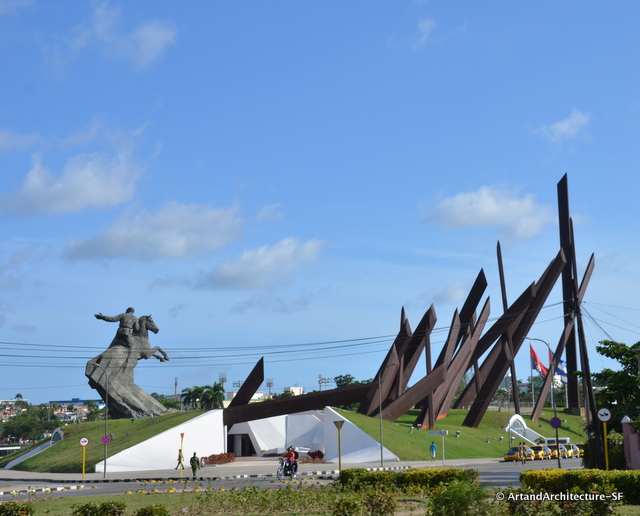 This monument is dedicated to the 19th century war hero, General Antonio Maceo. Saw-toothed “machetes” rise from the grass and surround a large sculpture of the General on horseback. If you are interested in learning more about this sculpture check out ArtandArchitecture-SF.
This monument is dedicated to the 19th century war hero, General Antonio Maceo. Saw-toothed “machetes” rise from the grass and surround a large sculpture of the General on horseback. If you are interested in learning more about this sculpture check out ArtandArchitecture-SF.
On Revolution Plaza is the Heredia Theater. It was opened on August 13, 1991 and cost 41 million Cuban Pesos to build.
Born in 1803, romantic poet, Jose Maria Heredia is Cuba’s most famous poet, although he died in Mexico while in exile. Heredia, because of his pro-independence writings, is considered Cuba’s first national poet.
In the older part of town, at Calle Heredia 260, Casa Natal de Jose Maria Heredia is now a museum paying tribute to his life. The building also functions as a cultural center and occasionally features poetry readings.
